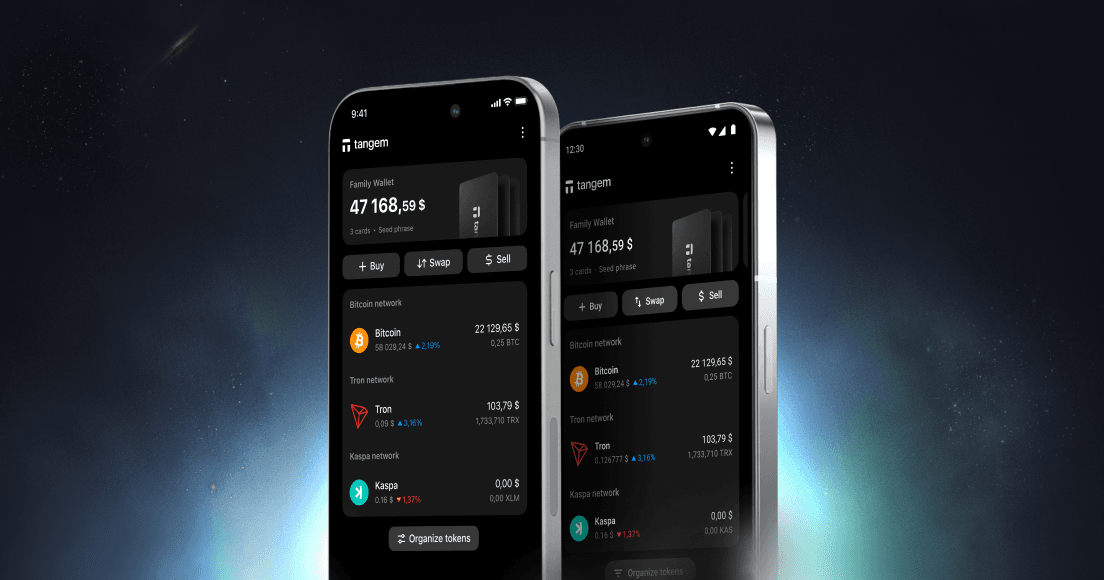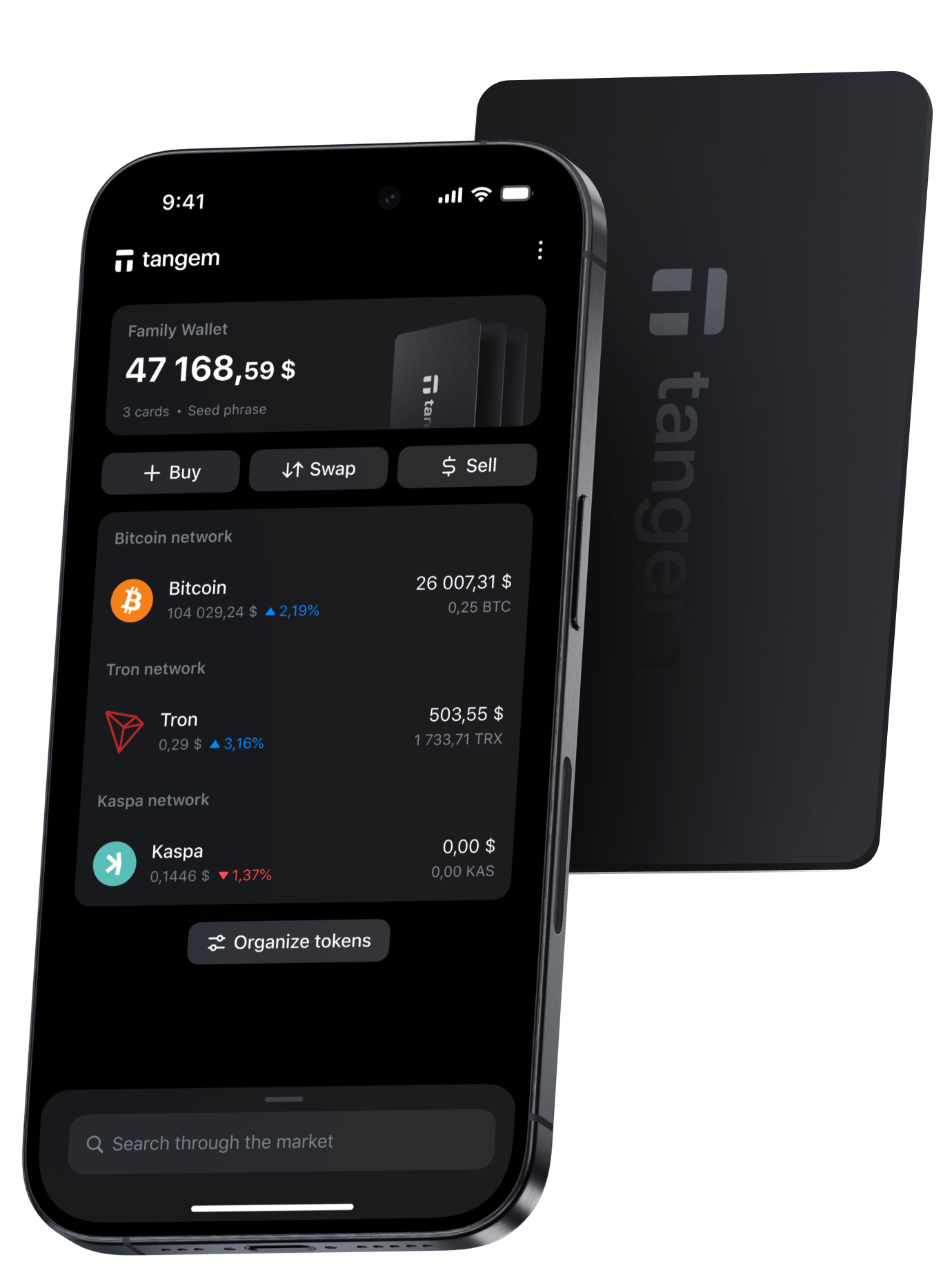
Monkei wallet
The most secure hardware wallet for your Monkei
Join a thriving community of Monkei enthusiasts safeguarding their assets with the Tangem Wallet. Your funds, your control.

How to secure your Monkei with Tangem?
When you buy or hold Monkei in Tangem, it secures your private keys in many ways:
- With the seedless setup and smart backups on extra devices, your Bitcoin is safe and accessible only to you.
- Tangem is IP69K water and dustproof, built to protect against extreme temperatures, EMPs, ESCs, and X-RAYS.
- An access code and biometric authentication protect against unauthorized access.
- Private keys are generated and stored on its EAL6+ CC secure element.
How to get a Monkei Crypto Wallet?
Tangem products are for everyone, from beginners to experts. They keep your crypto safe and easy to manage. With cutting-edge technology, Tangem lets you control and protect your digital assets.
Get TangemWhy choose Monkei wallet with Tangem.
What is Monkei (MONKEI)?
Monkei, represented by the ticker MONKEI, is a meme-inspired cryptocurrency created on the Ethereum network using the ERC-20 protocol. It’s crafted to be engaging and approachable for a diverse group of users. With a strong focus on community influence, the project's evolution and success are significantly shaped by its members.
What is a Monkei wallet?
A Monkei wallet is essential for safeguarding the private keys that manage your Monkei holdings. Though it doesn't store the Monkei itself—since the cryptocurrency resides on the blockchain—it creates and holds private keys for accessing and managing your Monkei balance. Essentially, a Monkei wallet is a utility for storing, sending, receiving, and organizing your Monkei assets.
How does a Monkei wallet work?
Public and private key pairs are at the core of Monkei wallets, managing blockchain-based accounts. While your private key is crucial for accessing your Monkei and should be kept secure, the public key can be shared with others to receive Monkei. Only with the private key can you authorize transactions or transfers. Tangem Wallet offers secure private key generation and storage through its advanced chip technology.
What are the types of Monkei wallets?
Exchange Monkei Wallets: Platforms like Coinbase, Binance, and Kraken support Monkei transactions using custodial wallets—great for ease of use but with risks such as losing access if the account is compromised.
Software Monkei Wallets: These installable applications for various devices help manage Monkei by storing the private keys. Despite their user-friendliness, they're susceptible to digital threats.
Mobile Monkei Wallets: Applications for smartphones that facilitate Monkei management on-the-go.
Desktop Monkei Wallets: Software programs for personal computers, storing private keys on the hard drive or SSD.
Hardware Monkei Wallets: Offline devices, like Tangem Wallet, offering robust protection against online vulnerabilities.
How to Choose the Best Monkei Wallet
Choosing the right wallet hinges on personal priorities such as simplicity, robustness, longevity, and security. For minimizing online risk and securing considerable funds, a hardware wallet like Tangem is often the recommended option.

Tangem supports other cryptocurrencies
Reliability and convenience at your fingertips. Manage thousands of cryptocurrencies with peace of mind anywhere and anytime
See all supported cryptosMonkei FAQ
- You can buy Monkei on major cryptocurrency exchanges like Binance, Coinbase, or Kraken. You can also use P2P platforms or specialized exchange services. For safe storage, it is recommended to use a reliable wallet like Tangem.
- For long-term storage of Monkei, a cold wallet such as Tangem is the best choice, offering a high level of security. For active transactions, a hot wallet is more convenient but less protected from hacking.
- Transfer fees for Monkei depend on the blockchain network load and the exchange or wallet used. Typically, this includes a network fee (gas fee) and possibly additional fees from the platform.
- To create a wallet for Monkei, install the Tangem app, follow the instructions to set up a cold wallet, and generate a unique address for storing your cryptocurrency.

Something went wrong

